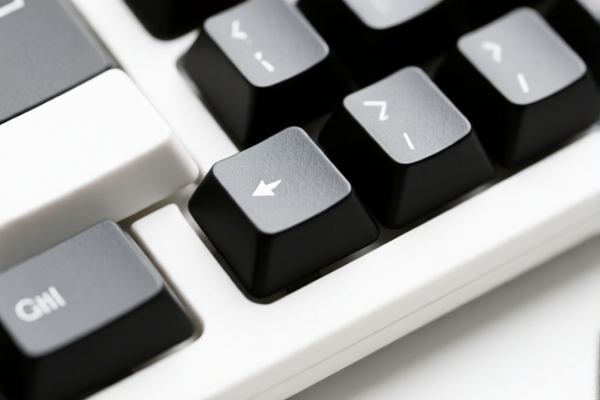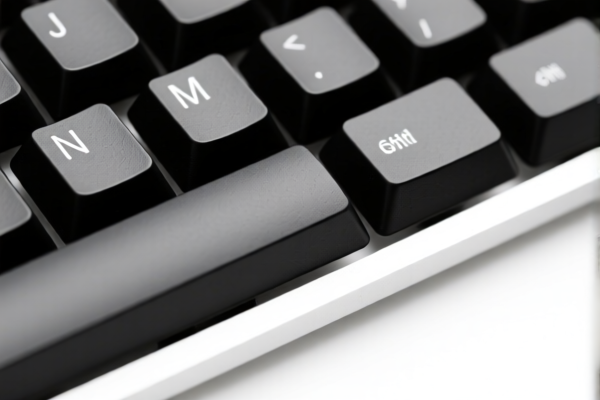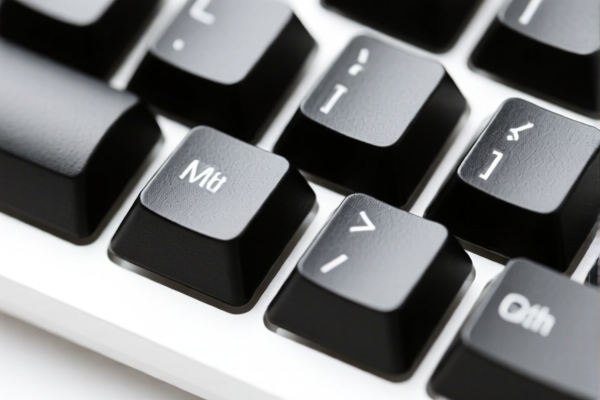| HS Code | Official Doc | Tariff Rate | Origin | Destination | Effective Date |
|---|---|---|---|---|---|
| 9608996000 | Doc | 37.5% | CN | US | 2025-05-12 |
| 9609908000 | Doc | 37.5% | CN | US | 2025-05-12 |
| 3926902500 | Doc | 44.0% | CN | US | 2025-05-12 |
| 3926909910 | Doc | 42.8% | CN | US | 2025-05-12 |
| 3924104000 | Doc | 33.4% | CN | US | 2025-05-12 |
| 3924905650 | Doc | 40.9% | CN | US | 2025-05-12 |
| 8472905000 | Doc | 37.5% | CN | US | 2025-05-12 |
| 8472909080 | Doc | 55.0% | CN | US | 2025-05-12 |
| 8517180020 | Doc | 30.0% | CN | US | 2025-05-12 |
| 7319909000 | Doc | 65.4% | CN | US | 2025-05-12 |
| 7319901000 | Doc | 62.5% | CN | US | 2025-05-12 |




Keyboards
A keyboard is an essential input device for computers and other electronic devices, enabling users to enter characters and functions.
Material
Keyboards are constructed from a variety of materials, including:
- Plastic: The most common material for keycaps and the keyboard chassis, offering affordability and ease of manufacturing. ABS and PBT are common plastic types, with PBT being more durable and resistant to shine.
- Metal: Often used for the keyboard frame and plate (the internal structure supporting the keys), providing stability and a premium feel. Aluminum is a frequently used metal.
- Mechanical Switches: These are the core component of mechanical keyboards, typically constructed from plastic housings, metal springs, and metal contacts.
- PCB (Printed Circuit Board): The electronic foundation of the keyboard, made from fiberglass and copper traces.
Purpose
The primary purpose of a keyboard is to facilitate text input and command execution. This encompasses:
- Typing: Entering letters, numbers, symbols, and other characters.
- Command Input: Using key combinations (shortcuts) to perform specific actions within software and operating systems.
- Gaming: Providing precise control and responsiveness for game inputs.
- Navigation: Utilizing arrow keys, function keys, and other keys to navigate interfaces.
Function
Keyboards function by registering key presses and transmitting corresponding signals to the connected device. This process involves:
- Key Matrix: A grid of circuits beneath the keycaps that detects which key has been pressed.
- Switch Activation: When a key is pressed, it activates a switch, completing a circuit.
- Signal Encoding: The keyboard's internal controller encodes the key press into a signal that the device can understand.
- Communication Protocol: The signal is transmitted to the device via a communication protocol, such as USB or Bluetooth.
Usage Scenarios
Keyboards are utilized in a wide array of settings:
- Office Environments: For document creation, data entry, and general computer operation.
- Home Use: For browsing the internet, email, social media, and personal tasks.
- Gaming: For controlling characters, executing commands, and interacting with game environments.
- Programming: For writing code and interacting with development environments.
- Content Creation: For writing articles, editing videos, and other creative tasks.
Common Types
Several types of keyboards are available, each with distinct characteristics:
- Membrane Keyboards: Utilize a pressure pad beneath the keys. They are affordable but offer less tactile feedback and responsiveness.
- Mechanical Keyboards: Employ individual mechanical switches for each key, providing a distinct tactile feel, improved responsiveness, and greater durability. Different switch types (e.g., Cherry MX, Gateron, Kailh) offer varying levels of resistance, sound, and actuation force.
- Chiclet Keyboards: Feature flat, square keys with minimal travel. Commonly found in laptops and offer a compact design.
- Ergonomic Keyboards: Designed to reduce strain and promote a more natural hand position.
- Wireless Keyboards: Connect to devices via Bluetooth or a USB receiver, offering greater freedom of movement.
- Gaming Keyboards: Optimized for gaming with features such as anti-ghosting, macro keys, and customizable RGB lighting.
- Compact Keyboards (60%, 75%, TKL): Reduce the overall size of the keyboard by removing less frequently used keys.
The declared goods are 10 keys. Based on the provided reference material, the following HS codes may be relevant:
- 8472905000: This HS code falls under Chapter 84 (Nuclear reactors, boilers, machinery and mechanical appliances; parts thereof) and specifically covers “Other office machines (for example, hectograph or stencil duplicating machines, addressing machines, automatic banknote dispensers, coin-sorting machines, coin-counting or wrapping machines, pencil-sharpening machines, perforating or stapling machines): Other: Typewriters other than printers of heading 8443; word processing machines”. While keys are not explicitly mentioned, they could be considered components of these machines.
- 8472909080: This HS code also falls under Chapter 84 and covers “Other office machines (for example, hectograph or stencil duplicating machines, addressing machines, automatic banknote dispensers, coin-sorting machines, coin-counting or wrapping machines, pencil-sharpening machines, perforating or stapling machines): Other: Other”. Keys could potentially fall under this broader category if not specifically covered by 8472905000.
- 7319909000: This HS code falls under Chapter 73 (Iron or steel articles). It covers “Sewing needles, knitting needles, bodkins, crochet hooks, embroidery stilettos and similar articles for use in the hand, of iron or steel; safety pins and other pins of iron or steel, not elsewhere specified or included: Other: Other”. If the keys are made of iron or steel and are considered similar articles for use in the hand, this HS code may be applicable.
- 7319901000: This HS code also falls under Chapter 73 and covers “Sewing needles, knitting needles, bodkins, crochet hooks, embroidery stilettos and similar articles for use in the hand, of iron or steel; safety pins and other pins of iron or steel, not elsewhere specified or included: Other: Sewing, darning or embroidery needles”. If the keys are made of iron or steel and are specifically sewing, darning, or embroidery needles, this HS code may be applicable.
Important Note: Regarding HS codes 7319909000 and 7319901000, please note the 65.4% and 62.5% total tax rates respectively. These rates include a 25% additional tariff for steel and aluminum products. Material verification may be required to confirm the composition of the keys.
Customer Reviews
This is the best site I've found for HS code information. The details on plastic doors and their tariff rates were spot-on.
The page gave a good overview of HS code 3925 and the associated trade rates. Just wish there were more examples.
Finally found a source that explains the 5% tariff rate for plastic doors. Very helpful for my business.
The HS code explanation was clear, but I would have liked a bit more on the import process itself. Still, it was helpful.
I was looking for details on exporting plastic doors and this page had all the info I needed. Definitely saved me time.